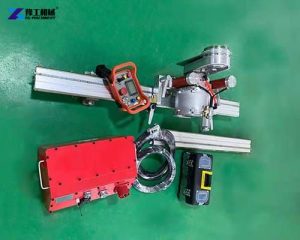A high-frequency wall saw is a tool specifically designed for cutting concrete, bricks, sandstone, and other hard materials. It works by using the vibrations generated by a high-frequency motor to drive the saw blade for cutting, so it can complete the work faster and more efficiently. High-frequency wall saws usually have a large cutting depth and cutting speed, and are suitable for engineering projects that require fast and precise cutting. At the same time, due to its high-frequency vibration characteristics, the noise and vibration generated during the cutting process are relatively small, which can improve the comfort and safety of the operator. High-frequency wall saws are widely used in construction, road maintenance, urban transformation, and other fields.


Characteristics of High Frequency Wall Saw
1. Portable: High-frequency wall saws usually adopt a lightweight design, which is easy to carry and operate.
2. Efficient and fast: High-frequency wall saws have high speed and high power, which can complete the work quickly and efficiently.
3. Low noise and vibration: High-frequency wall saws are electrically driven, with less noise and vibration, and a more comfortable working environment.
4. Accurate and stable: High-frequency wall saws are equipped with high-quality saw blades and stable working platforms, which can achieve precise cutting operations.
5. Wide application: High-frequency wall saws are suitable for cutting different types of materials, such as concrete, stone, etc.
6. Strong durability: High-frequency wall saws are made of high-quality materials and precision manufacturing processes, and have a long service life.


Using Precautions
When using a high-frequency wall saw, pay attention to the following matters:
Safety protection: Wear protective glasses, masks, and other protective equipment.
Stable operation: Keep your body stable to avoid shaking or losing balance during the operation.
Regular inspection: Regularly check the wear of saw blades, motors, and other parts, and replace damaged parts in time.
Follow the operating procedures: Use this machine strictly under the operating procedures.




